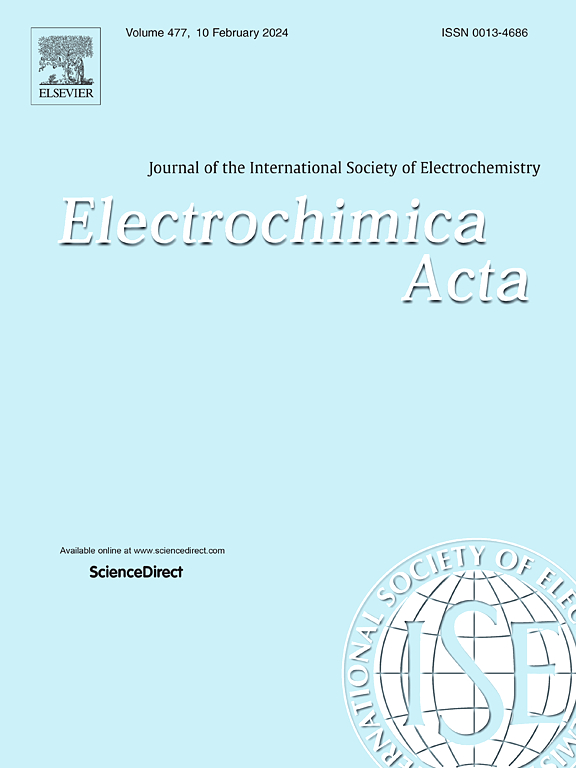Enhanced electrokinetic remediation of cadmium contaminated soil by calcium phosphate-modified zeolite as permeable reactive barriers
IF 5.6
3区 材料科学
Q1 ELECTROCHEMISTRY
引用次数: 0
Abstract
Electrokinetic permeable reactive barrier (EK-PRB) is recognized as a prospective technology for the in-situ treatment of heavy metal-contaminated agricultural soils. However, the remediation efficiency is mostly limited by the PRB material. In this study, a calcium phosphate-modified zeolite(Z) adsorption material named Cax(PO4)y/Z was successfully developed. The morphology and adsorption performance of Cd have been thoroughly explored. The adsorption capacity of Cax(PO4)y/Z for Cd amounted to 209.97 mg g−1, and the fitted adsorption was in agreement with the mechanistic model, suggesting that the adsorption of Cax(PO4)y/Z on Cd was mainly chemisorption. The fitted adsorption isothermal model showed that the adsorption of Z on cadmium was monolayer adsorption. The synthesized Cax(PO4)y/Z was used as the adsorption material in EK-PRB to remove cadmium from contaminated agricultural soil. The removal efficiency of Cd is doubled compared to EK, and the energy consumption is reduced by about 147.2 kW·h for 1 g kg−1 Cd removed. Moreover, the experimental results further confirm its potential for long-term stable application. This work demonstrates the practical feasibility of Cax(PO4)y/Z as an efficient PRB material in EK-PRB for in-situ remediation of Cd-contaminated soil.
磷酸钙改性沸石作为渗透反应屏障对镉污染土壤的强化电动力学修复
电动力学渗透反应屏障(EK-PRB)是一种很有前途的原位治理重金属污染农业土壤的技术。但其修复效率主要受PRB材料的限制。本研究成功研制了磷酸钙改性沸石(Z)吸附材料Cax(PO4)y/Z。对镉的形态和吸附性能进行了深入的研究。Cax(PO4)y/Z对Cd的吸附量为209.97 mg g−1,拟合吸附符合吸附机理模型,表明Cax(PO4)y/Z对Cd的吸附主要是化学吸附。拟合的等温吸附模型表明,镉对Z的吸附为单层吸附。利用合成的Cax(PO4)y/Z作为吸附材料,在EK-PRB中对污染农业土壤中的镉进行了去除。与EK相比,Cd的去除效率提高了一倍,每去除1 g kg−1 Cd,能耗降低约147.2 kW·h。实验结果进一步证实了其长期稳定应用的潜力。本研究证明了Cax(PO4)y/Z作为一种高效的PRB材料在EK-PRB中原位修复cd污染土壤的可行性。
本文章由计算机程序翻译,如有差异,请以英文原文为准。
求助全文
约1分钟内获得全文
求助全文
来源期刊

Electrochimica Acta
工程技术-电化学
CiteScore
11.30
自引率
6.10%
发文量
1634
审稿时长
41 days
期刊介绍:
Electrochimica Acta is an international journal. It is intended for the publication of both original work and reviews in the field of electrochemistry. Electrochemistry should be interpreted to mean any of the research fields covered by the Divisions of the International Society of Electrochemistry listed below, as well as emerging scientific domains covered by ISE New Topics Committee.
 求助内容:
求助内容: 应助结果提醒方式:
应助结果提醒方式:


